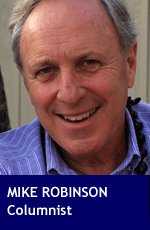BASIC, PREMIUM MEMBERS/ACCOUNT HOLDERS
Login to start your download. ![]() This content is for members only.
This content is for members only.
NOT YET A BASIC or PREMIUM MEMBER/ACCOUNT HOLDER?
This content costs $16
803 words SAVE TIME! We can BROADCAST this content directly to your web site. Contact us for details.
Search Contributor/Columnist photo gallery
 Venice has been a feast of art, archaeology and escape for tourists since it began to attract them in the 15th and 16th centuries. But it is under attack.
Venice has been a feast of art, archaeology and escape for tourists since it began to attract them in the 15th and 16th centuries. But it is under attack.
One of the world’s first cities to be founded almost exclusively on the conduct of financial transactions, its promotion of mercantile capitalism led the way to mercantile tourism as the financial world began its expansion.
Venice really developed around the original “one-belt, one-road project.” It became the Spice Road’s preferred western harbour terminus as a city of islands with a transalpine connection to western Europe.
About 60,000 tourists a day now visit the city, and annual visitors range from 22 million to 30 million.
Having just experienced my first visit, I can absolutely relate to Venice’s cultural allure as the host city of Carnival and the Biennale – creative ventures of epic proportions.
Adrift in this spirit, my wife and I were sitting in a shaded park on the island of Burano (just north of Murano Island, which is just north of Venice), thinking of how inundated with visual culture we were after our first day in Venice.
A young woman tentatively approached our rest spot with a smile. She asked if we would respond to an environmental questionnaire.
I said yes, but only if she promised it was legitimate and not some sort of cash scam.
She replied that she was a first-year PhD student in a local university, and explained that the questionnaire was linked to her thesis research.
She seemed sincere and I agreed to participate, telling her about my decades of volunteer environmentalism in Canada.
What followed was a telling experience given my presumed environmental sensibilities.
After collecting background information on the respondent, the questionnaire immediately focused on the environmental factors influencing our selection of a trip to Venice.
To be absolutely candid, there were none.
“How much did we know of the Venetian lagoon?”
Very little.
“What local, indigenous fish species were we planning on eating during our visit?”
“Are anchovies local?” was my best response.
“What did we know of the causes of the growing high variations in lagoon water levels?”
“Ahh – climate change?” was my best answer.
I knew nothing of subsidence of building foundations because of 19th century pumping of the aquifers, or the long history of acqua alta spring high tides.
“Did we know the Venice lagoon was the primary area for introduction of non-indigenous species into the Mediterranean?”
“Ah, no.”
And so it went. As far as Venice’s ecological environment went, I was an illiterate.
This is obviously embarrassing given that the lagoon really defines Venice as a city and a region. The area comprises 550 square km, and 80 per cent of it is comprised of mud flats, tidal shallows and salt marshes. It teams with fish and birdlife, and is the largest wetland in the entire Mediterranean basin. Only eight per cent of its surface area is land – Venice and the surrounding small islands.
As the northernmost water of the Adriatic Sea, it will be the last body of local water to register fully the growing onslaught of climate change. On this point, our PhD student inquisitor noted that Israeli offshore waters were already becoming tropical, and she fully expected this to happen to the Venice lagoon.
“We are already on the lookout for non-indigenous tropical species that are travelling north in the Mediterranean.”
The interview concluded after half an hour of questions. We then began to talk of solutions and futures.
“I am at a bifurcation point – is that a word in English?” ventured the Phd student. Assuring her it was, we began discussing her career options.
She was extremely reluctant to work for the Italian government. “It is far too bureaucratic and takes forever to accomplish basic tasks. I want to cause positive change in my career,” she opined. Academic jobs were becoming hard to get (just like in Canada), and they too had significant administrative and bureaucratic burdens.
I launched in with the speech I have given a thousand times on the virtues of an activist, intellectual and entrepreneurial career in an environmental non-governmental organization.
She smiled broadly and ventured, “That’s exactly what I’m thinking of!”
My wife and I wished her the best. At that point our vaporetto (a public water bus) arrived at the Burano dock and it was time to return to the Canal Grande Hotel in Venice – far wiser than we were a short time ago.
Mike Robinson has been CEO of three Canadian NGOs: the Arctic Institute of North America, the Glenbow Museum and the Bill Reid Gallery. He has also chaired the national boards of Friends of the Earth, the David Suzuki Foundation, and the Canadian Parks and Wilderness Society. In 2004, he became a Member of the Order of Canada.
© Travel Like This
![]()
The views, opinions and positions expressed by columnists and contributors are the author’s alone. They do not inherently or expressly reflect the views, opinions and/or positions of our publication.
© Troy Media – All Rights Reserved
Troy Media provides editorial content to media outlets and its own hosted community news outlets across Canada



